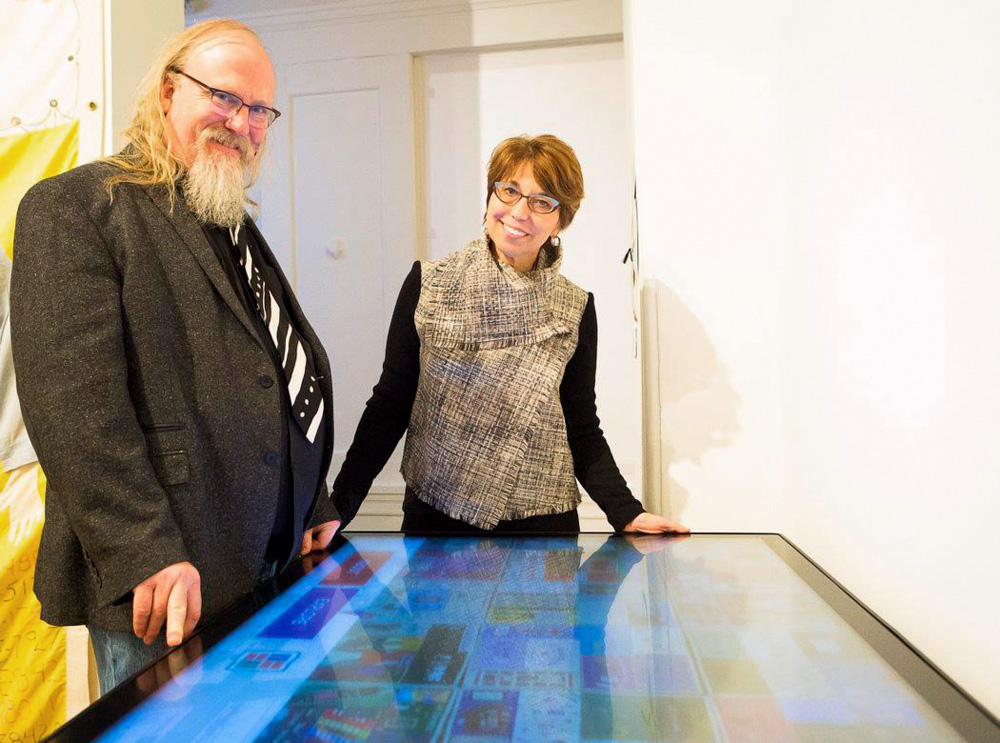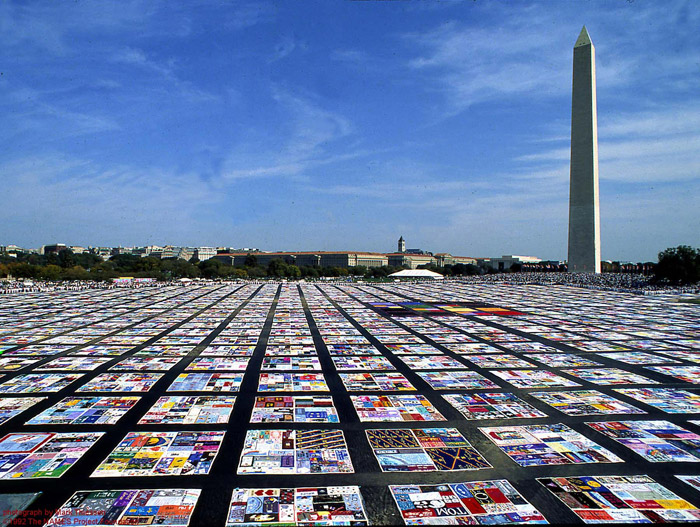ATEC Leaders’ AIDS Quilt Touch Stitches Together Tapestry for Digital Age
By: Phil Roth | Nov. 20, 2020

The AIDS Memorial Quilt began in 1985 with a few people who wanted to ensure that their loved ones who had died from AIDS would be remembered. Thirty-five years later, a technology project spearheaded by leaders of the School of Arts, Technology, and Emerging Communication (ATEC) at The University of Texas at Dallas enables people all over the world to view the panels of those who are memorialized in the quilt.
The AIDS Memorial Quilt, now part of the National AIDS Memorial in San Francisco, is a 54-ton tapestry that includes more than 48,000 panels dedicated to more than 100,000 individuals. It remains a symbol of the AIDS pandemic — a memorial to those who died from AIDS — and an HIV-prevention education tool. The quilt is considered the largest community arts project in history.
Because of its size — it would take more than 50 miles to display — the quilt no longer can be shown in one location. However, an interactive application called AIDS Quilt Touch offers users the ability to digitally search and view the quilt. Before they joined UT Dallas, Dr. Anne Balsamo, ATEC dean, and Dale MacDonald, ATEC associate dean of research and creative technologies, received funding from the National Endowment for the Humanities in 2011 to create the beta version of the application.

AIDS Quilt Touch
Interactive AIDS Memorial Quilt (mobile only)
AIDS Quilt Touch on ATEC website
Video Essay the AIDS Memorial Quilt: Origins, Legacy, Futures
MacDonald, who led the technical part of the project, developed the code to “stitch” together more than 6,000 high-resolution images of quilt blocks.
“We have access to all of the data about who is named on each panel of the quilt and who made the panel,” he said. “To make it possible for users to find that information, we built a search engine that linked it to positions within the digital quilt. It takes a lot of computational power to search such a large visual image.”
Balsamo, who also is holder of the Arts and Technology Distinguished University Chair and the Arts and Humanities Distinguished Chair at UT Dallas, said she was pleased that many more people can now learn more about those who are remembered in the quilt.
“When AIDS Quilt Touch launched this summer as an interactive web application, it was the first time that people across the globe could visually explore the quilt by zooming in and out and panning across the expansive visual image,” she said. “We had a prototype running for 15 years, but we were limited in how we could present it. People are drawn in when they see images of panels, but what they want to know is, ‘Tell me about that person that I’m seeing, that beautiful panel that I’m seeing. Who is that person?’”
The project began in 2001, growing out of technology innovation research that Balsamo, MacDonald and colleagues conducted at Xerox PARC, a research and development company. After leaving PARC and launching their Silicon Valley technology and fabrication company called Onomy Labs, Balsamo, MacDonald and the other Onomy Labs co-founders sought opportunities to use their innovative technologies to support cultural good.
“We had this technology for which we were seeking a noncommercial opportunity,” Balsamo said. “I understood how important the quilt was — its beauty and its historical significance. So we applied the technology to create a novel interactive digital experience.”
“When AIDS Quilt Touch launched this summer as an interactive web application, it was the first time that people across the globe could visually explore the quilt by zooming in and out and panning across the expansive visual image.”
Dr. Anne Balsamo, dean of the School of Arts, Technology, and Emerging Communication
Balsamo and MacDonald contacted a leader of the foundation that managed the quilt project who was eager to partner with the team but said the organization had no money to support the technology development. For several years the application and hardware development was an unfunded “passion project” for Onomy Labs. That changed in 2011, however, when the National Endowment for the Humanities awarded a Digital Humanities Development grant to Balsamo and then, two years later, a Digital Humanities Implementation grant jointly to MacDonald and Balsamo. Over the past decade, the AIDS Quilt Touch has involved more than 50 collaborators across the U.S.
Now, at UT Dallas, Balsamo and MacDonald continue work on the project in the Public Interactives Research Lab that they co-direct. Balsamo and MacDonald said that during their 19 years of work on the project, it has become personal.
“I know a number of names in the quilt and, as I worked with the project staff and came to understand the history, as well as the rituals behind the quilt, I’ve had to deeply absorb that information to best consider how we develop a respectful interface,” McDonald said.
Balsamo said the AIDS Memorial Quilt has been recognized as one of the 100 most important works of American culture in the 20th century.
“For me, the project is important both scholarly and personally. I’m a cultural historian, who thinks about the histories of the future,” she said. “During our current pandemic — which has its own stories — we are turning back to the stories of the AIDS pandemic to revisit important insights and lessons about life and death in the midst of an unprecedented public health crisis. More personally, I truly, truly believe that remembering, honoring and acknowledging even our most difficult cultural histories is our most important and highest kind of recognition of our shared humanity.”
Media Contact: Phil Roth, UT Dallas, 972-883-2193, phil.roth@utdallas.edu, or the Office of Media Relations, UT Dallas, (972) 883-2155, newscenter@utdallas.edu.





